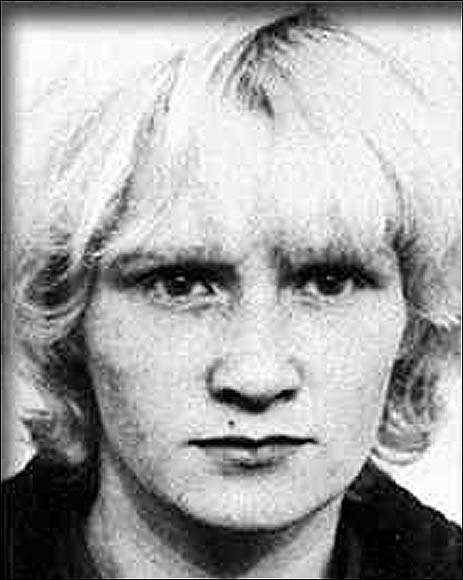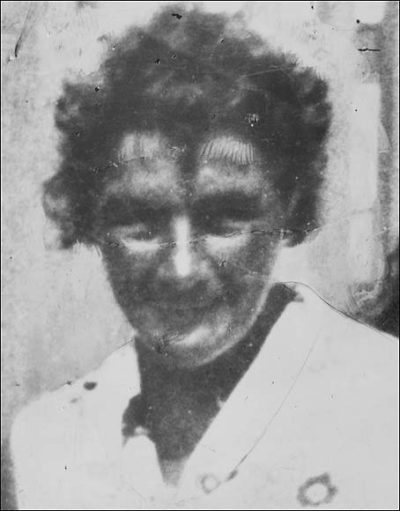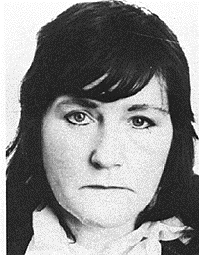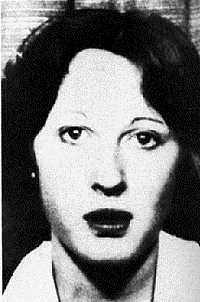On December 16, 2020, Netflix released The Ripper, a British true crime docuseries that takes place in four episodes. The Ripper recounts the investigation and the events that took place between the years 1975 and 1980.
Thirteen women were murdered by a man named Peter Sutcliffe. The first episode, Once Upon a Time in Yorkshire, focuses on breaking down the events covered in the documentary. The media called this serial killer “The Ripper” to indicate the similarities between these killings and the Jack the Ripper murders. They used it to spark interest with the public.
However, as the episodes went on it could be shown that the public and the cops waited too late to take all the victim’s murders seriously as some of the women were sex workers.
Once Upon a Time in Yorkshire (Episode 1)
The first episode talks about Yorkshire in the 70s and the first set of victims of Peter Sutcliffe. The cops and media don’t start taking it seriously until the murder of a young girl.

Wilma McCann
Wilma would normally say good night to her four children around 7:30 PM leaving her oldest child who was 9-years-old in charge. She lived in a council house with her children on Scott Hall Avenue in an area around Leeds.
Wilma would head to clubs and bars in the red-light area of the town. She was a sex worker trying to make money for her children. She was 28-years-old.
Her son, Richard McCann, said there was a lot of commotion and that was odd for him and his siblings.
Wilma was attacked by Peter in the early morning of October 30, 1975. She was found lying on her back with her bra lifted, her breasts exposed, and her trousers pulled down to her knees. Her hair was matted with blood. She was also stabbed in the chest, neck, and lower abdomen.
From this moment on she would be the first victim. She wouldn’t be prioritized because she was a sex worker. You can hear the dismissal from the cops and press about her murder not being as important since she engaged in this “lifestyle.” One of the speakers called it a minor story.
A point that angered me was their attitude, that it was like, oh well, it’s just a sex worker and they moved on.

Emily Jackson
Emily Jackson was 42-years-old. She worked with her husband who was a local roofing contractor. She would drive him from job to job and handle the paperwork. To make extra money, Emily would take the family van and go to pubs and bars looking for business and clients.
Eighty days later on January 20, 1976, Emily was found on Manor Street in Leeds. Her body was found lying on her back and her legs spread apart. She was dragged to the spot she lay as there were marks on the ground. Her bag was nearby, but nothing was taken.
Emily also had a boot print impressed on her thigh. The boot size was about a size 7 or 8. The similarities show that this may have been linked with Wilma’s murder.
A point of notice was the cop saying this killer hates sex workers, a mistake that I felt was made on his part. It once again dismissed the victims.

Irene Richardson
Irene was a 28-year-old woman who was down on hard times and spent many nights on the street. Before her death, she was rooming in a house on Cooper Street. On February 5, 1977, she went to Tiffany’s which was a bar/disco in Leeds. Unfortunately, she too would be murdered.
The next morning, Irene was found by John Bolton who was jogging across Soldiers Field. He thought she was sick and asked her “what’s the matter” before realizing she was dead. He ran to a nearby house and called the police.
Irene was also face down with her hands under her stomach and her head turned left. Her hair hid the stab wounds to her throat and neck. The coat she wore was draped around her legs only showing her feet. Her boots were placed carefully on her tights.

Patricia Atkinson
Patricia (Tina) was a 32-year-old woman and sex worker. She lived in a small flat on 9 Oak Avenue in Lumb Lane, Bradford. The night she was murdered she was also drunk after being at two different bars.
Seventy-six days later from Irene’s murder, on April 23, 1977, Peter attacked her in her apartment. After his attack, which was also quite severe, he pulled down her jeans and exposed her breasts. Afterward, he covered her with sheets.
It was also the first time it seemed he attacked a victim in her home. One of the comments about Patricia feeling safe from one of the women talking also annoyed me as if she was drunk, she wasn’t fully aware of what was happening.
During this, the police still were making light of it. While they acknowledged it was harder being that these murders were probably committed by a stranger, it was still talked about like it was normal for a sex worker to be killed. This theme is in every single episode.

Jayne MacDonald
Jayne was a 16-year-old girl who was a shop assistant who just graduated from school. On the night before she was murdered, Jayne went to hang with some friends. She danced and had a good time. A boy she met named Mark Jones was one of the last people to see her.
Jayne left him around 1:30 AM and was trying to get a taxi to get home. Unable to get a taxi, she walked. She actually lived very close to Wilma McCann.
Jayne was close to a playground on Reginald Street and was killed by Peter after he was hanging with friends and left. He hit her on the back of the head and dragged her to the corner of the playground. He pulled her clothes up and stabbed her.
Two children found her at 9:45 AM. This attack happened 63 days after Patricia’s murder. She was also found lying face down.
A point of note here was the police and media describing her as the first “innocent victim.” This was the murder that got national attention and outrage from the public. This was something that was missing for the other women that were victims. This upset me greatly—the difference in how they handled this case.

Marcella Claxton
Marcella was a Black woman who was attacked by Peter on May 9, 1976. She was on her way home from a party around 4 AM. Marcella was attacked multiple times by Peter, and he left her a £5 note. He did come back looking for her or the note, but she was able to make her way to the phone booth and call for help.
This attack happened 110 days after Emily Jackson’s murder. She gave a good description of Peter, but the cops being extremely racist during that time not only ignored that information but also assumed it was a Black man who did it even though she gave a description.
While Marcella is mentioned briefly in the last episode, the documentary completely skips this case even though she was one of the first victims. I did a little digging for this one as it explains the police not doing their job properly.
Between Now and Dawn- (Episode 2)

Maureen Long
Maureen was mentioned at the end of the first episode, so this one starts with her. She was a 42-year-old woman who was having a night out. On July 10, 1977, Maureen had come from Tiffany’s and made her way home.
She ran into Peter after he offered her a lift. She was hit four to five times in the back of the head with a hammer. Her attack happened 14 days after Jayne’s death.
Maureen was found in the morning after by two women. She was whimpering and the police came. However, Maureen suffered amnesia from the attack. She was able to describe his car which was a white Ford with a black roof.
The description she gave of her attacker was that he was white, about 36- or 37-years-old, with large hands, and well built. Her amnesia in turn made the police unable to use her a major key in the case.

Jean Jordan
Jean (Jean Royle) was 20-years-old when she was murdered. She was a sex worker who lived and worked in Manchester. Jean lived with her common-law husband Alan Royle and their two children in a flat on Lingbeck Crescent. On October 1, 1977, Alan went to hang with friends and when he returned, Jean was gone.
He thought she went out with her friends. When she failed to return in the morning, he thought she went to Scotland as she had done often. However, Jean went to make some money. Jean was going to go to another car but decided on Peter’s red Ford. (He purchased a red Ford in September 1977 after selling the white Ford described by Maureen Long.)
This will be her mistake, as he will hit her 10 times and hide her body after almost being caught.
Jean was found by two men who were allotment holders. Her body was lying near a wooden shed about 20 feet from a pathway that was used often.
When Peter didn’t hear anything about it, he decided to return to find the £5 note that was from his paycheck at Clark’s which was incriminating evidence. He wasn’t able to find it no matter how hard he looked and in turn, he took her body and mutilated it.
He tried to take off her head as well, so cops wouldn’t know he had spread to another location for his murders. The £5 note would eventually trace back to him.
Jean was killed 82 days after Peter had attacked Maureen.

Helen Rytka
Helen was 18-years-old and was killed 10 days after Yvonne. She had a twin sister named Rita. They both were sex workers but hadn’t been for long. They worked together to try to prevent men from harming them. Helen was from Huddersfield.
On January 31, 1978, Helen and Rita went to the red-light area to make money. Around 9 PM, Helen would take her first job and Rita did shortly after. Helen got back to the spot she and her sister would meet back up and saw Peter.
Peter hit her, grazing her first, and then he did so again. Two taxi drivers were there, but oblivious to what was going on. He dragged her to a different area and put his hands over her mouth. He had sex with her and then he left to get his hammer.
She got up and tried to escape and he hit her on the back of the head. He then went and got his knife and stabbed her multiple times then hid her body by a stack of timber.
Rita reported Helen missing three days later. Police dogs found her and she was covered in asbestos. Her clothes were scattered all over.
Angela Gallop was a forensic scientist who was at this crime scene. Gallop described the scene as horrible and that Helen was beautiful and it stuck with her.

Yvonne Pearson
Yvonne was 21-years-old and worked as a sex worker. On January 21, 1978, Yvonne would leave her two children with her neighbor who was 16-years-old. She went to a pub called the Flying Dutchman. She left around 9:30 PM to earn money.
After Peter helped his parents move, he went to Bradford and started looking for his next victim. He spotted Yvonne who was wearing a black sweater and black pants as she tapped on his window. Once again, he was almost caught.
Peter pulled Yvonne to a sofa and stuffed horsehair in her mouth while holding her nose. He did this until she didn’t move or make a sound.
On March 26, 1978, she was discovered by a passerby who saw her arm sticking out of the sofa accompanied by a bad smell. It was Easter Sunday. The man discovered her body unrecognizable and badly beaten.
After her murder, police offered a reward for information as well as opened a tip line.

Vera Millward
Vera was 40-years-old and also a sex worker. She lived in Hulme, Manchester. Vera had previously had three major operations between 1976 and 1977. She left home at 10 PM on May 16, 1978. She told her boyfriend she was going to buy cigarettes. He knew it meant she would be working and didn’t expect to see her for a few hours.
Vera would meet Peter, and he would take her to Manchester Royal Infirmary. He attacked her. Vera tried to fight him off but to no avail. Vera was found the next morning by workers on the hospital grounds at 6 AM.
Tire tracks were also left on the scene and went back to like the scene of Irene’s murder. She would be the last sex worker Peter would kill.
Reclaim the Night (Episode 3)

Josephine Whitaker
Josephine was a 19-year-old woman who worked as a society clerk. She was the first of Peter’s attempt to move away from hurting sex workers.
On April 4, 1979, Josephine visited her grandparents. She was invited to stay the night at her grandparent’s house, but she decided to walk home. Her reasoning being she didn’t have the case for her contact lenses and had to go to work the next day.
During her walk home, Josephine would run into Peter as he watched her before parking his car. He got a screwdriver and a hammer and then talked to her. She told him she didn’t have too far to go.
Josephine was hit from behind with the hammer and she fell to the floor moaning. There were people near so he dragged her away from the road. He then brutally stabbed her and mutilated her. Her skull was fractured.
At 6:30 AM, she was found by a woman at the bus stop. The woman called the police. Josephine’s 13-year-old brother, would see the commotion and realized it was his sister.
She was murdered 33 days after he attacked Ann Rooney. This was also 322 days after he had killed Vera.
It is important to note that during this episode, a tape and letters were sent to the authorities claiming to be The Ripper and bragged about the cops not finding him after four years.
They also bring up Margaret Thatcher becoming the first woman Prime Minister in England. It also mentions women being more prone to living their truths, living their lives and experimenting with fashion, birth control pills, etc. A few women said it was liberating.
The police and media also made it clear that any woman could be a victim. Something that should’ve been said honestly from the very beginning.

Barbara Leach
Barbara was a 20-year-old college student studying social psychology.
On September 2, 1979, she hung out with her friends at Mannville Arms. She left at 11 PM with friends before separating from the group.
Peter would see her by herself. As she walked past her car, he attacked her from behind and dragged her to a backyard that was nearby. He stabbed her with the same screwdriver he stabbed Josephine with. He then placed her body by the trash bins and covered her with an old carpet.
She was found the following afternoon by police after her roommates reported her missing. She was murdered 150 days after Josephine.
After her murder, there were escort services to help women get back home safely. Many women were more on guard. The women were put on a curfew, which enraged them as men were the ones doing the killing, not the women.
The police spent money launching an investigation called Project R putting out samples of the letter that was sent and places to listen to the audio. They had many places people could stop and listen and study the writing to see if anything would seem familiar to them.
The authorities realized during this that the letters only talked about the murders that were already reported. It was then they realized the tape and letters were a hoax.

Mo Lea
Mo describes going out with friends and separating from them as she had to take the bus. Peter hit her in the back of the head. Her jaw was broken, her skull was fractured, and she had massive swelling and bruising. She was told by doctors that she was a victim of The Ripper.
A thing that bothered me with her story was how she said, “being associated with a killer of prostitutes was too dark.” While I understand wanting to forget what happened, it just once again seemed dismissive of all the other lives lost. Considering there were women from all walks of life who were attacked and murdered by the end of it all.

Jacqueline Hill
Jacqueline was a 20-year-old college student finishing the third year of her English degree. On November 17, 1980, she was returning to student residence. She took a bus at 9 PM from Cookridge Street.
She was close to her home, but Peter was waiting and followed her in his car before stopping to allow her to walk past him. He hit her on the back of the head.
Another woman named Andree Proctor was also stalked. As she walked past, he dragged her into spare land where he stabbed her multiple times.
Jacqueline’s bag was found at 10 PM by another student. Police were called earlier, and they came. They searched for three minutes and left. Their incompetence is why she wasn’t found until the following morning.
This was 12 days after Teresa Sykes was attacked. Teresa was a victim that survived.

Joan Smith
Joan Smith, a woman who worked in the radio decided to get the reports from the FBI to dig more into the case. She was upset about the fact that they didn’t include this case in the investigation because it didn’t fit the sex worker idea they have used from the beginning.
The fact that there were women who saw him, described him and spoke to him. One woman was Olive Smelt. She was also the one who realized there were other women before Wilma.

Olive Smelt
Olive was a 46-year-old office cleaner. On August 15, 1975, she was hanging out with friends, drinking, and having a good time. Olive spoke to Peter as he made a comment and she replied. He attacked her, hitting her on the back of the head.
She told Joan that she didn’t want women thinking they were safe when this man was at large.
At the end of the episode, police noticed a car and noticed the plates did not match the vehicle. They took the man into the police station, and they realized that they had their suspect.
Out of the Shadows (Episode 4)
At the beginning of this episode, they talk about how Peter’s dad, John Sutcliffe, realized his son was the one that they were talking about in the news and the killings. He seemed shocked by it.
The police rejoiced as if they did the work when they were incompetent and ignorant with many regards to the case and the list goes on.
Peter Sutcliffe was named as The Ripper. He gave information about the killings, also explaining what he did and the stuff that the police had mentioned in the case.

Tracey Brown
Tracey was 14-years-old when she was attacked on August 27, 1975. She was hit with a hammer and felt pain.
She saw two years later that similar attacks were happening and she went to the police to say it was the same person. The cops ignored her, and he went on to kill for years.
When she saw his picture, she confirmed it was him.
Other Victims
They also mentioned the other women who were victims but survived. There was Anna Rogulsky, Marilyn Moore, Dr. Upadhya Bandara. Teresa Sykes (pictured below). Also, Olive Smelt, Marcella Claxton, and Maureen Long who were mentioned previously.

Marguerite Walls
At the end of the episode of the series, it was noted that Peter admitted to killing her as well.
Marguerite was a 47-year-old woman who worked at the Department of Education. She also worked with the Science office in Pudsey.
On August 20, 1980, she left her office around 10 PM. She would be starting her 10-day vacation the next day. Peter saw her walking alone and quickly caught up to her striking her with the hammer in the back of the head.
She was found the next morning by two gardeners. At first, it wasn’t believed he did it as there were differences, but eventually, it was confirmed it was him.
Marguerite was murdered 353 days after Barbara.

Final Thoughts
Overall, the documentary made me quite sad knowing that this case could’ve been solved years prior before Peter was able to continue his heinous crimes. It always seems with these documentaries that police don’t take things seriously until it’s too late or they make many mistakes and it hinders the case.
The misogyny in the series was evident in the way the press and police talked about and handled the case. I felt angry and sad for the victims and angry at many of the speakers in the documentary.
In a way, it does seem like it was a tad bit glamourized. While I doubt the women’s families or the survivors can see this, I wanted to give my love and send peace this way as I know this may have been hard for them to watch.
Until next time, over and out!






